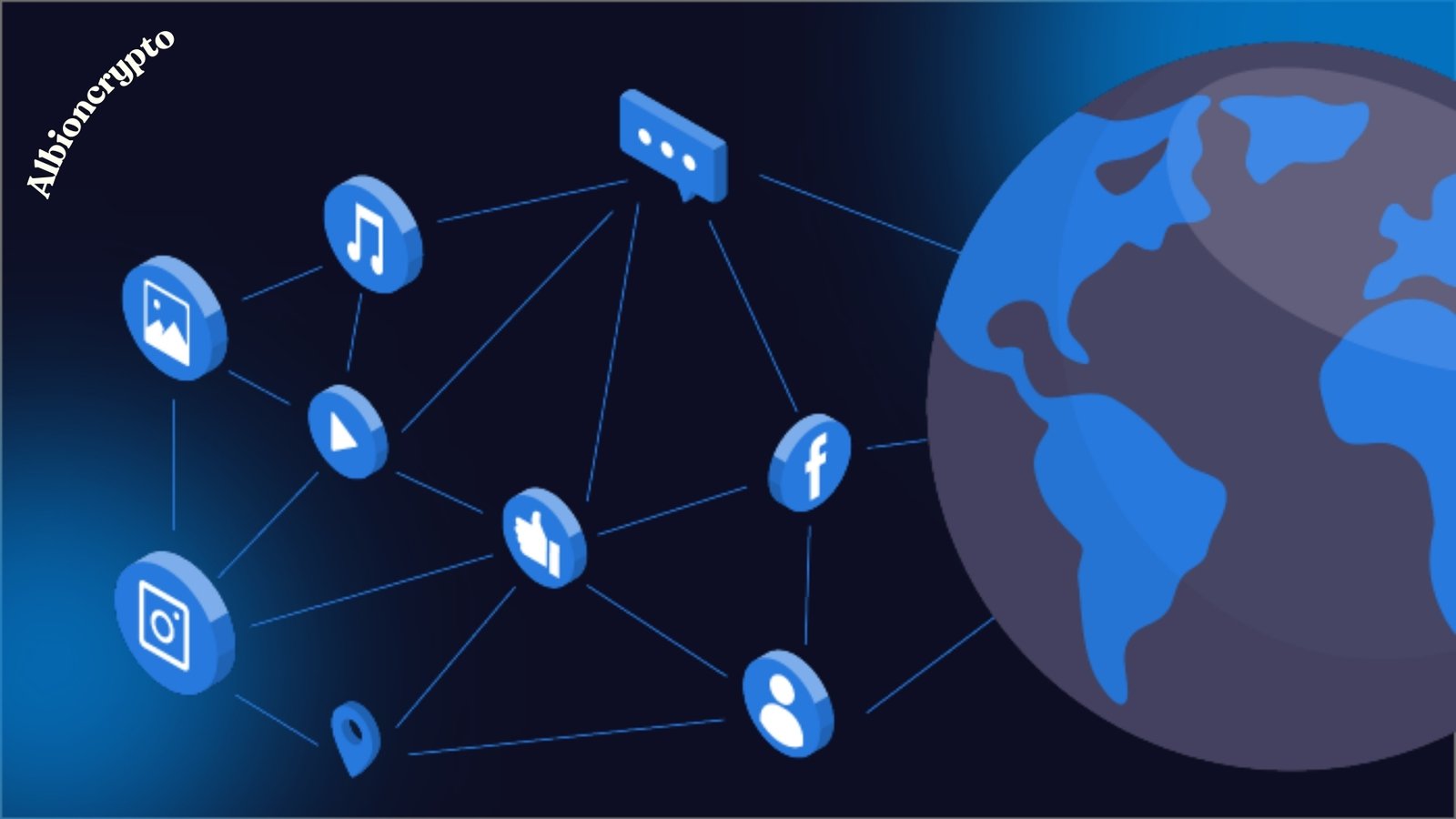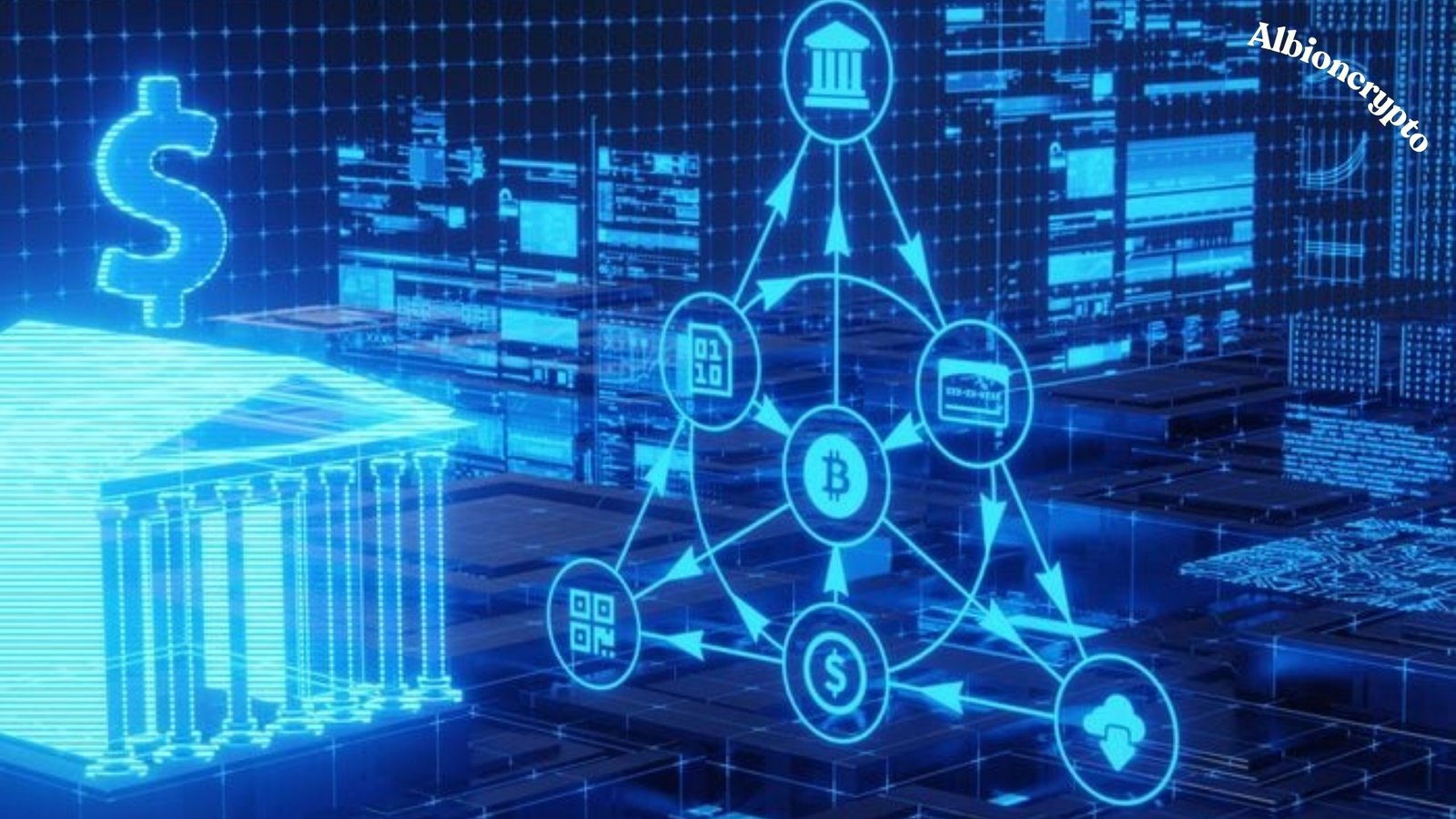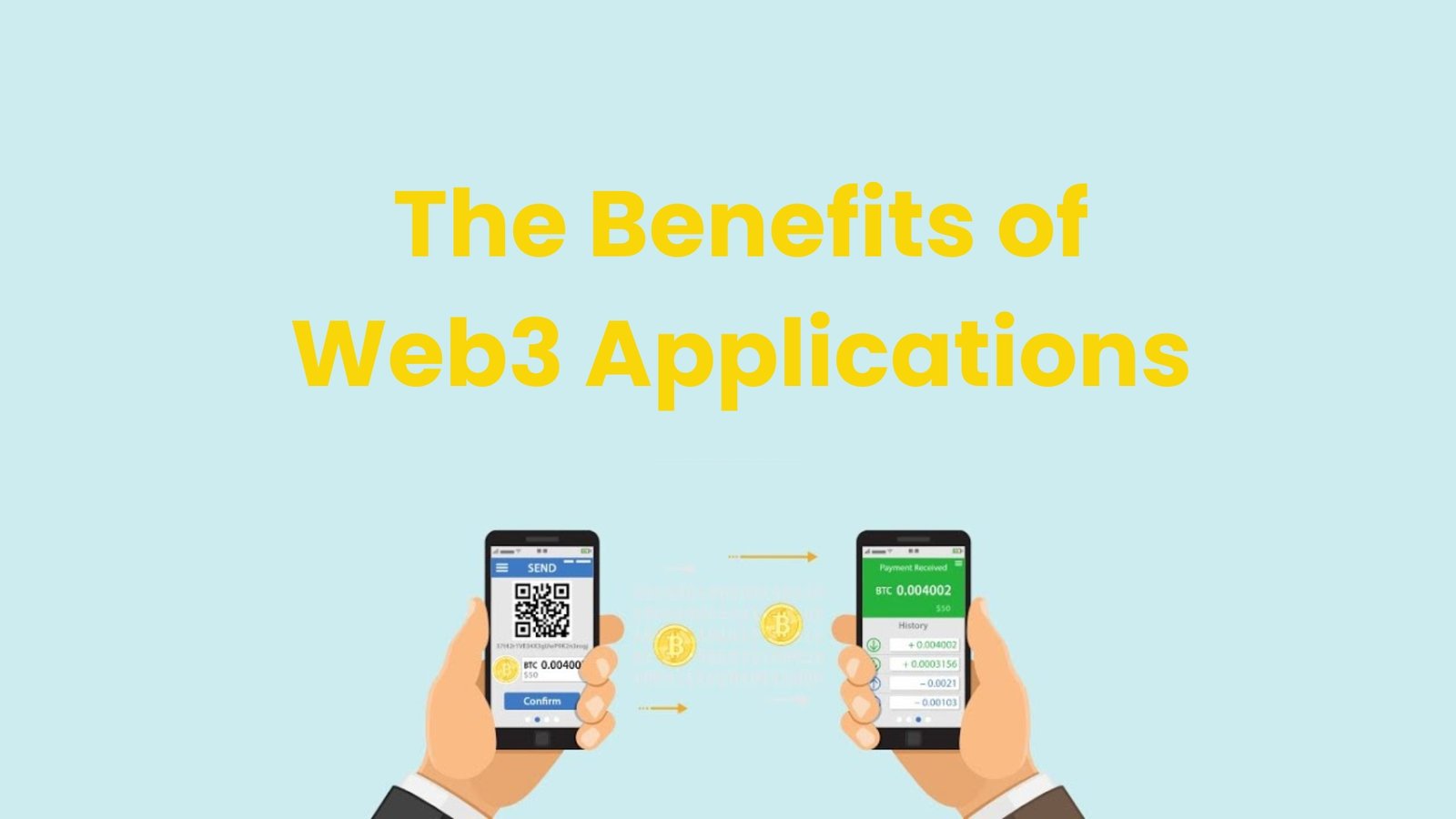From its infancy as static web pages to its current state as a dynamic, user-centric platform, the Internet has experienced tremendous change over the last several decades. The third generation, or Web3, will change how we use the Internet. At the front of this change are Web3 applications, which aim to decentralize power and give people more agency over their data, identities, and digital possessions. In this post, we shall define Web3 applications, compare them to their forerunners, and discuss how they could change many markets.
A solid understanding of Web3 is a prerequisite to comprehending its applications. Web3 is the next iteration of the web, and it’s all about decentralization, blockchain, and cryptocurrency. In contrast to Web2, which is marked by centralized platforms such as Amazon, Facebook, and Google, Web3 aspires to create a more open, transparent, and user-controlled internet.
Key Features of Web3 Applications
Web3 apps are fundamentally distinct from standard Web2 applications in several important directions. These are some of the most important characteristics that distinguish Web3 applications:
Decentralization
Web3 apps run on distributed networks, usually constructed on blockchain technology, instead of Web2 apps that depend on centralized servers and databases. This decentralization reduces censorship, data breaches, and other centralized failures because no single party controls the application.
User Ownership and Control
In the Web3 paradigm, users are given more agency and ownership over their data, identities, and digital assets. When they employ self-sovereign identities, users can control their data without depending on other parties. Furthermore, users can own digital assets like cryptocurrencies and non-fungible tokens (NFTs), which are stored on blockchain networks and can only be accessed by users.
Transparency and Trustlessness
Anybody may check the code and functionality of Web3 apps because they are built on open-source and transparent protocols. Users can independently confirm the application’s integrity, which promotes trust due to its transparency. As a bonus, many Web3 apps are trustless, so there is no need for a third party to mediate transactions or interactions between users.
Interoperability
Because of its open architecture, Web3 apps may easily communicate with one another and any other platform or app in the Web3 ecosystem. Open standards and protocols allow for a more integrated and interoperable digital experience.
Tokenization
Many Web3 apps use tokens, representing a wide range of assets, including digital collectibles, access rights, cryptocurrencies, and more. The primary purpose of these tokens is to encourage users to participate in the application’s governance, value exchange, and participation incentives. Tokenization opens up new revenue and economic models previously impossible with conventional Web2 apps.
Examples of Web3 Applications
Finance, gaming, social media, and supply chain management are just a few of the many sectors and use cases that have found a home in Web3 applications. A few well-known Web3 applications are these:
Decentralized Finance (DeFi)
Within the Web3 ecosystem, DeFi is among the most important and quickly expanding sectors. Without going through conventional banks, users of DeFi apps can engage in lending, borrowing, trading, and interest earning. Uniswap, MakerDAO, Aave, and Compound are some examples of DeFi platforms. These platforms automate financial transactions using smart contracts and are built on blockchain networks like Ethereum. As a result, intermediaries are reduced.
Non-Fungible Tokens (NFTs)
Whether it’s a piece of art, a song, or even virtual real estate, NFTs are one-of-a-kind digital assets that prove ownership. The storage of NFTs on blockchain networks guarantees their uniqueness and authenticity. Platforms such as OpenSea, Rarible, and Decentraland are examples of Web3 applications centered around NFTs. By eliminating intermediaries, these platforms enable artists to tokenize their creations and sell them to collectors directly.
Decentralized Autonomous Organizations (DAOs)
Automated governing organizations (DAOs) run on blockchain networks and are controlled by token holders and intelligent contracts. In a decentralized autonomous organization (DAO), the community of token holders makes decisions collectively, unlike in a typical organization with a central authority. Aragon is a platform for developing and managing DAOs, and MakerDAO is an example of a DAO that manages the Maker protocol. DAOs serve multiple functions, including managing decentralized initiatives, facilitating fund pooling, and facilitating communal decision-making.
Decentralized Social Media
In addition to more conventional social media sites like Facebook and Twitter, Web3 apps are increasingly appearing in this space. The guiding principles of decentralized social media networks are users’ right to privacy, data ownership, and resistance to censorship. Two examples are the decentralized microblogging network Mastodon and the decentralized music streaming service Audius. Users can manage their data and content on these platforms, and they frequently give out tokens as a reward for their efforts.
Supply Chain Management
Web3 apps are revolutionizing supply chain management by making it more efficient, transparent, and traceable. Supply chain systems built on the blockchain guarantee immutable data and allow for real-time product tracking. Here are a few examples of Web3 applications: VeChain provides a blockchain platform for managing supply chains, while IBM’s Food Trust uses blockchain technology to trace food from farm to table.
The Benefits of Web3 Applications
In comparison to standard Web2 apps, Web3 applications benefit from several advantages, including the following:
Enhanced Security
Because of decentralization and blockchain technology, web3 applications are more secure than centralized ones. Data is safer from hacking, breaches, and other security issues when distributed across a network of nodes.
Greater Privacy
Web3 apps prioritize users’ privacy by letting them self-sovereign their identities and data. They differ from their Web2 counterparts in that they do not force users to relinquish their privacy in exchange for access to features.
Censorship Resistance
Because they are decentralized, Web3 apps can withstand censorship and other forms of intervention. In areas where censorship is expected, this is especially crucial for apps that help people express themselves freely, get information, and participate in the financial system.
New Economic Models
Web3 applications make new economic models possible by using tokenization and decentralized governance. Contributing to a platform can reward users with tokens, which can then be used for decentralized decision-making or to own a piece of the app’s success, for instance.
Improved Transparency
Because they are based on open-source protocols, anyone may check the code and functionality of Web3 apps. This openness makes users trust the program more and guarantees it works as expected.
Challenges and Limitations of Web3 Applications
Even though Web3 apps have a lot of advantages, they also have a lot of disadvantages and restrictions, including the following:
Scalability
Scalability is a significant concern for Web3 apps. Blockchain networks, especially Ethereum, sometimes encounter congestion during heavy demand and incur hefty transaction fees. Because of this, fewer people may utilize Web3 apps, and the user experience may suffer. To tackle these scalability concerns, alternative blockchain networks and layer 2 solutions are still in the early phases of development.
User Experience
Web3 apps are notoriously complicated and complex for anyone who isn’t technically savvy. Many hesitate to utilize cryptocurrencies because they don’t understand private keys, wallets, and gas fees. Enhancing the user experience and increasing accessibility to Web3 apps is essential to achieving widespread acceptance.
Regulatory Uncertainty
Cryptocurrency taxation, securities regulations, and consumer protection are just a few of the many challenges that various regulatory agencies are currently trying to resolve in the ever-changing legal environment for Web3 applications. Uncertain regulations, especially in the DeFi and NFT domains, may cause problems for Web3 initiatives.
Interoperability
Although Web3 relies on interoperability, integrating various blockchain networks and apps without any hitches has been impossible. Although protocols for interoperability and cross-chain solutions are in development, they have not yet seen broad adoption.
Adoption and Awareness
Even though Web3 is becoming more popular, many individuals are unfamiliar with it or afraid to use it because of worries about security, complexity, or regulations. If Web3 is to be widely used, more education and publicity about it are essential.
The Future of Web3 Applications
Many industry insiders anticipate that Web3 will supersede all other internet paradigms, which bodes well for Web3 apps. As blockchain technology develops and scaling solutions improve, Web3 apps will become more accessible, user-friendly, and integrated.
One of its most alluring features is the possibility that Web3 will shift established markets and open up new avenues for economic growth. Web3 applications could revolutionize our interactions with digital platforms and one another, changing everything from decentralized banking to digital identities.
In addition, Web3 apps will most certainly be essential in shaping the future of the metaverse, a shared virtual place that combines AR, VR, and other immersive technologies. Web3 principles—centered on decentralized networks, digital ownership, and user control—are anticipated to form the basis of the metaverse, a sector projected to be worth multi-trillion dollars.
In Summary
The advent of Web3 applications has caused a sea change in our understanding of data ownership, digital interactions, and the Internet. Web3 applications offer a more open, transparent, and user-centric digital experience, including decentralization, blockchain technology, and tokenization. Web3 still has issues with scalability, user experience, and regulatory uncertainty, but it has the chance to revolutionize businesses and give people more control.
Governments, corporations, and individuals must comprehend the possibilities and consequences of Web3 as we progress deeper into its era. With the proliferation of Web3 applications, your interactions with the digital world will undoubtedly be altered in the years to come, regardless of whether you are a developer, an entrepreneur, or just an ordinary internet user.
FAQs
What makes Web3 applications different from traditional Web2 applications?
Web3 applications operate on decentralised networks using blockchain technology, rather than centralised servers. They give users ownership and control over their data, identities, and digital assets. Unlike Web2 platforms controlled by companies like Facebook or Google, Web3 apps are transparent, trustless, and resistant to censorship, allowing users to interact without intermediaries.
What are some real-world examples of Web3 applications?
Common Web3 applications include DeFi platforms like Uniswap and Aave for decentralised finance, NFT marketplaces like OpenSea for digital collectables, DAOs like MakerDAO for community governance, decentralised social media platforms like Mastodon, and supply chain solutions like VeChain that provide transparent tracking of products.
What are the main benefits of using Web3 applications?
Web3 applications offer enhanced security through decentralisation, greater privacy by allowing users to control their own data, resistance to censorship, new economic models through tokenisation that reward user participation, and improved transparency since they’re built on open-source protocols that anyone can verify.
What challenges do Web3 applications currently face?
The main challenges include scalability issues with blockchain networks experiencing congestion and high fees, complex user experiences that can be intimidating for non-technical users, regulatory uncertainty around cryptocurrency and consumer protection, limited interoperability between different blockchain networks, and low adoption rates due to lack of awareness and understanding.
How might Web3 applications shape the future of the internet?
Web3 applications are expected to disrupt established markets and create new economic opportunities. They could revolutionize digital interactions through decentralized finance, self-sovereign digital identities, and user-controlled platforms. Web3 is also anticipated to be fundamental to the metaverse, providing the infrastructure for digital ownership and decentralized networks in immersive virtual environments.


